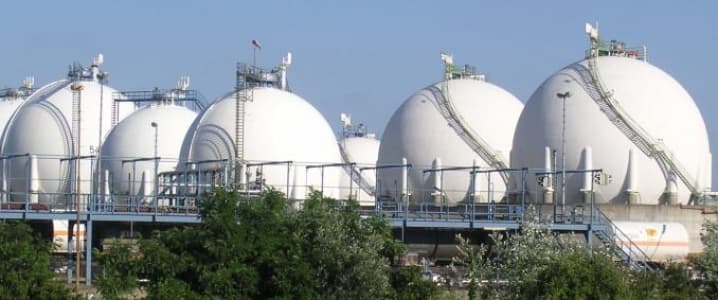On the day of a historic OPEC agreement to cut production in a desperate attempt to spur markets on the road to rebalancing, the EIA reported an anticlimactic decline in U.S. commercial crude oil inventories of less than a million barrels: stockpiles were down 900,000 barrels in the week to November 25.
This brought the total to 488.1 million barrels, within the average for this time of year, though close to the upper limit.
Yesterday, the American Petroleum Institute estimated total commercial oil inventories had fallen by a modest 717,000 barrels, with strategic stockpiles at Cushing up by 2.3 million barrels – the highest weekly build since March 2015.
Gasoline inventories, according to EIA, were up by 2.1 million barrels, above the upper limit for the week, with production at 10 million barrels per day. Refineries operated at 89.8 percent of capacity, processing 16.3 million barrels of crude, and producing also 5.2 million barrels of distillate.
Last week, EIA added bullishness to a market already high on OPEC optimism by reporting a 1.3-million-barrel decline in commercial oil stockpiles. That came after a 5.3-million-barrel weekly increase.
Today’s OPEC meeting gave bulls a major shot of adrenalin as its members reportedly managed to overlook their various differences and agree to a production cut that should help improve prices. Still, with Nigeria, Libya, and now Iran allowed to increase their production, it is doubtful how much the agreement will help. Iran has been treated as a “special case.”
The overall OPEC output reduction should amount to 1.2 million bpd, although now it’s the turn of non-OPEC producers such as Russia to join in the fight against low prices and chip in a 600,000-bpd cut.
The longer-term effects of the agreement remain to be seen but for now markets are rejoicing, with Brent crude trading at US$50.93 at 11:00 AM EST, and WTI at US$48.49.
By Irina Slav for Oilprice.com
More Top Reads From Oilprice.com:
- Ahead Of OPEC’s Meeting, API Inventory Report Shows Major Crude Build At Cushing
- Can An OPEC Deal Save Venezuelan Oil From Total Collapse?
- Corn Farmers Celebrate: EPA Raises 2017 Biofuel Mandates
















